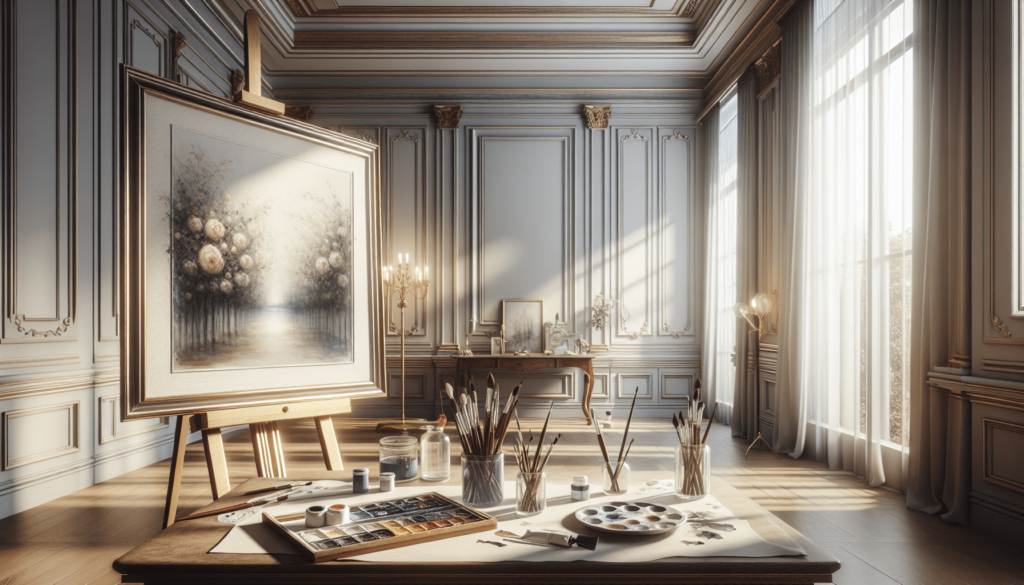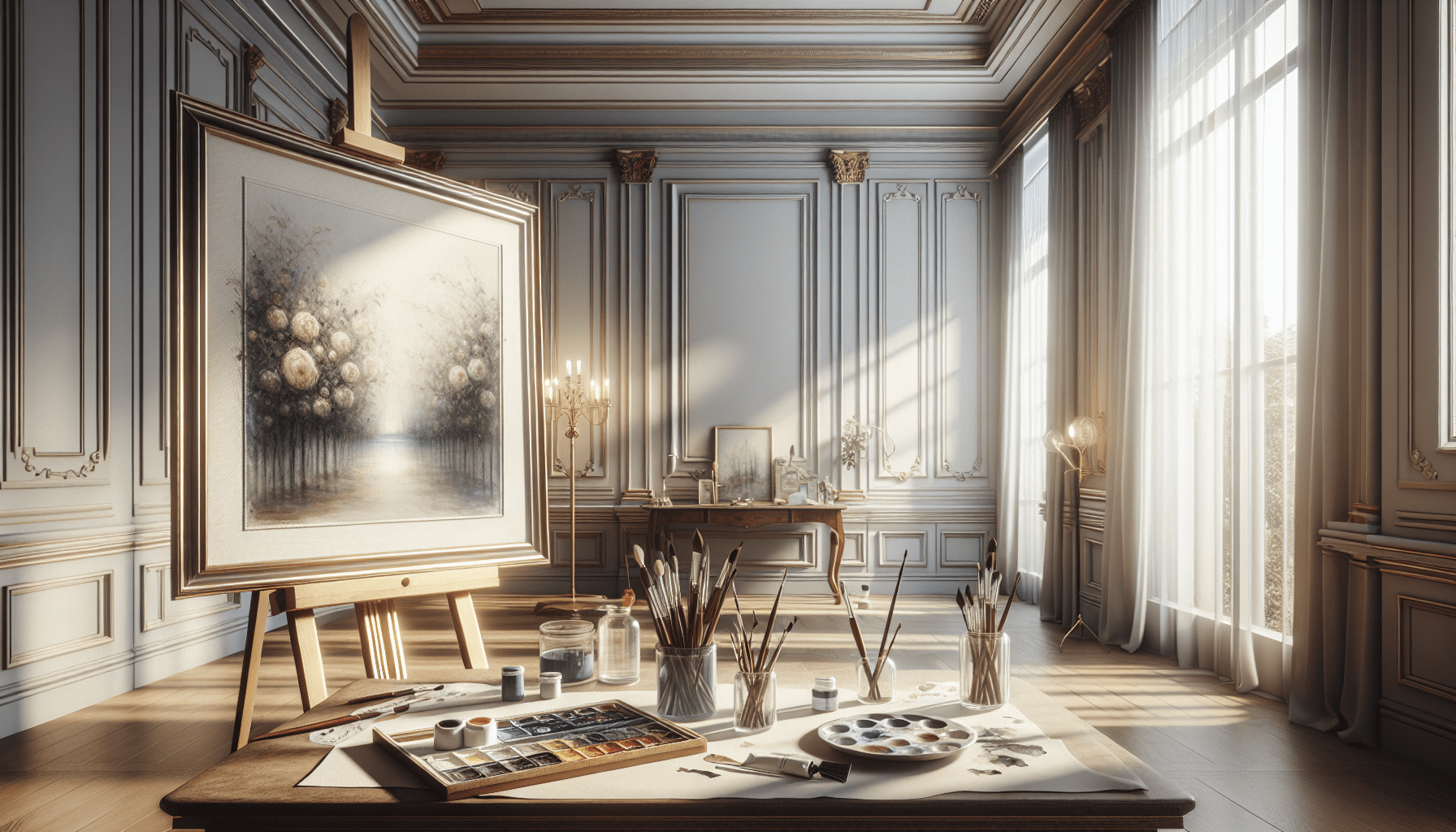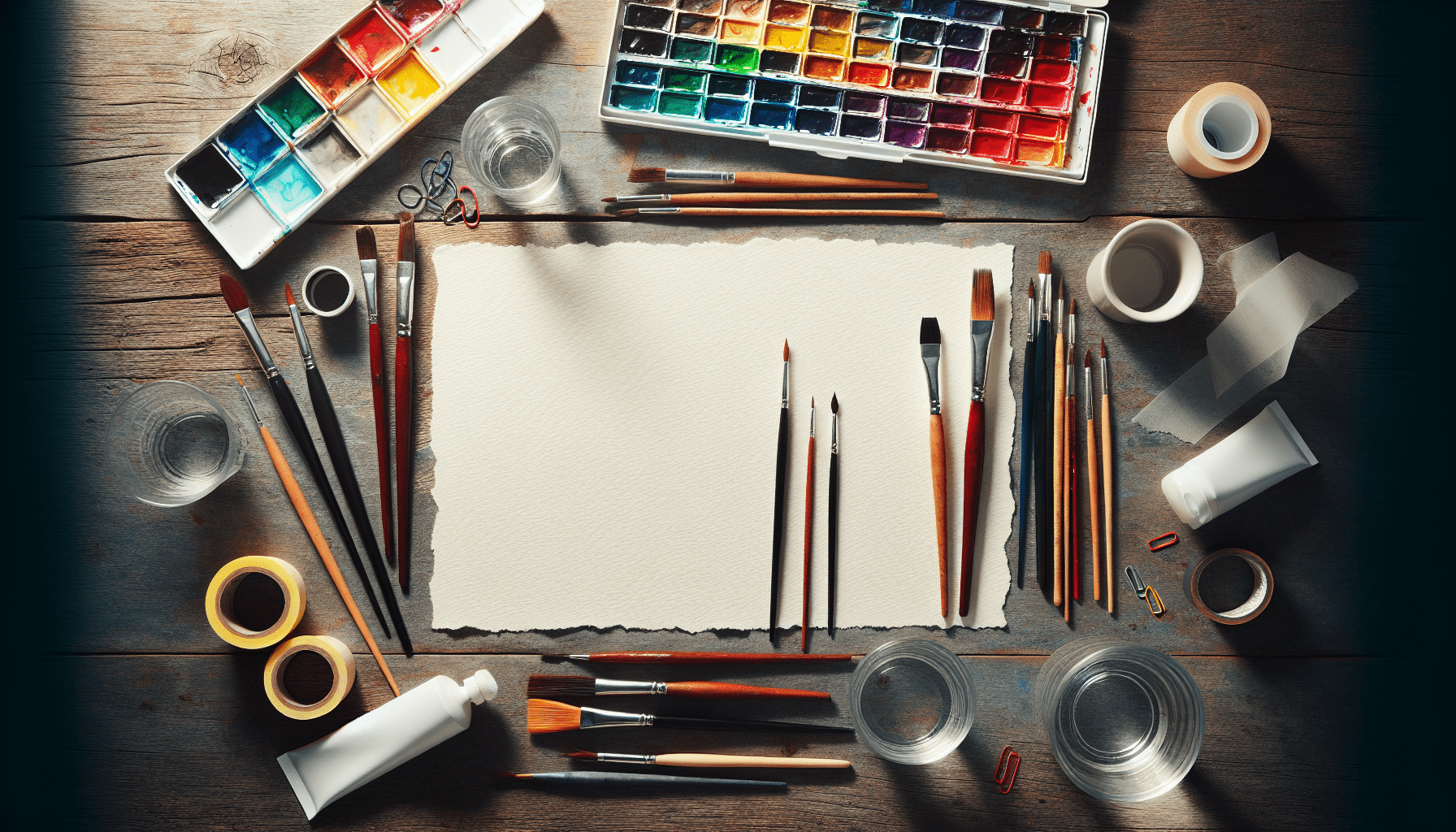Have you ever wondered how to protect your watercolor paintings? As an artist, investing time and resources into creating your watercolor masterpieces makes it imperative to preserve them for future generations. Keeping your artwork safe from environmental factors, physical damage, and aging will ensure it remains as vibrant and beautiful as the day you completed it. This guide provides detailed and structured advice to help you protect your watercolor paintings effectively.
Understanding the Vulnerability of Watercolor Paintings
Watercolor paintings are uniquely delicate due to their medium and paper substrate. Unlike oil or acrylic paints, watercolors rest on the surface of the paper and are thus more susceptible to damage from light, humidity, and physical contact.
Factors Affecting Watercolor Paintings
Watercolor paintings are susceptible to various environmental and physical factors. Understanding these elements will help you take preventive measures to safeguard your artwork.
Light Exposure: Ultraviolet (UV) light is one of the most harmful elements for watercolor paintings. Prolonged exposure to sunlight or even artificial lighting can cause colors to fade and the paper to become brittle.
Humidity and Temperature: Variations in humidity and temperature can lead to warping, mold growth, and paper deterioration. Excess moisture can cause the pigments to bleed, while too little humidity can make the paper brittle.
Pollutants and Dirt: Dust particles, smoke, and airborne pollutants can settle on the surface and embed into the paper fibers, affecting color clarity and integrity.
Physical Contact: Touching the surface of a watercolor painting can transfer oils from your skin onto the artwork, causing smudging and other damage.
Preparation and Materials Needed for Preservation
Preserving your watercolor paintings involves various steps and materials, including proper framing, storage, and environmental control.
Essential Materials
Here is a list of essential materials you will need to protect your watercolor paintings:
| Material | Purpose |
|---|---|
| Acid-Free Mat Board | Prevents yellowing and degradation of the paper |
| UV-Protective Glass | Shields the painting from harmful UV light |
| Archival Framing Tape | Secures the artwork without causing damage |
| Protective Sleeves | Provides a dust-free environment |
| Climate Control Devices | Monitors and manages humidity and temperature conditions |
Understanding the purpose of each material will help you make informed choices when preserving your artwork.

Proper Framing Techniques
Proper framing is crucial to protect your watercolor paintings from environmental threats and mechanical damage. A well-framed painting can last for decades without significant degradation.
Choosing the Right Frame
Selecting an appropriate frame involves considering the materials and the protection they offer.
Wooden Frames: Wooden frames are aesthetically pleasing and offer stability but ensure they are treated to resist pests and moisture.
Metal Frames: These are durable and less prone to warping compared to wood. They provide excellent protection but can be heavier.
Utilizing Acid-Free Matting
Employ acid-free matting to prevent the paper from acid damage, which can cause yellowing and brittleness over time.
Double Matting: Using a double mat provides additional space between the glass and the painting, reducing the chance of condensation forming on the artwork.
UV-Filtering Glazing
UV-filtering glazing is essential to protect your painting from harmful UV rays. There are two main options:
UV-Resistant Plexiglass: Lighter and shatter-resistant but can scratch easily.
UV-Resistant Glass: Heavier and more fragile but provides excellent clarity and protection.
Climate Control and Storage
Maintaining an optimal climate and proper storage conditions is key to preserving watercolor paintings. Controlling humidity and temperature will significantly prolong the life of your artwork.
Ideal Environmental Conditions
To ensure longevity, watercolor paintings should be kept in specific environmental conditions:
| Parameter | Ideal Range |
|---|---|
| Humidity | 40% – 60% relative humidity |
| Temperature | 65°F – 75°F (18°C – 24°C) |
Stability in these conditions helps prevent warping, mold growth, and other humidity-related issues.
Using Climate Control Devices
It is advisable to use instruments that monitor and adjust the environmental conditions in your storage area.
Hygrometers and Thermometers: Continuously monitor the humidity and temperature.
Dehumidifiers and Humidifiers: Use these devices to maintain an optimal humidity level.
Air Purifiers: Reduces airborne pollutants and dust that could damage the paintings.

Handling and Display
How you handle and display your watercolor paintings is critically important to their longevity. Improper handling and display practices can negate all other protective measures you have implemented.
Safe Handling Practices
Whenever you handle your watercolor paintings, follow these guidelines to prevent damage:
Clean Hands or Gloves: Always wash your hands thoroughly or, even better, wear cotton gloves to avoid transferring oils and dirt to the artwork.
Support the Back: Always support the back of the painting to avoid stressing the paper or frame.
Avoid Direct Touch: Never touch the surface of the painting, especially where the pigment is applied.
Display Guidelines
To minimize the risks of light exposure and environmental damage, consider these display guidelines:
Limited Light Exposure: Avoid placing the painting in direct sunlight or under harsh fluorescent lights. Use low-intensity lighting or natural light filtered through UV-protection.
Art Rotation: If possible, rotate the paintings on display periodically to limit continuous exposure to any single painting.
Regular Maintenance and Inspection
Routine maintenance and regular inspections are necessary to ensure the continued protection of your watercolor paintings. Identifying problems early can save your artwork from more severe damage.
Periodic Cleaning
Over time, your paintings will accumulate dust and potentially other pollutants.
Dusting: Use soft-bristled brushes or special microfiber cloths to gently remove surface dust. Vacuum the area where the paintings are displayed or stored regularly to limit dust accumulation.
Condition Inspections
Conduct periodic inspections to check for signs of damage.
Assess Physical Integrity: Look for warping, tears, or any other physical damage to the paper or frame.
Check for Mold: Inspect the painting for spots or patches that may indicate mold growth, particularly if it has been exposed to high humidity.
Monitor Color and Fading: Take note of any changes in color vibrancy or fading, which might indicate exposure to harmful light.
Professional Conservation Services
Despite all preventive measures, there might be instances where professional intervention is required. Knowing when and why to seek professional conservation services can be invaluable for the preservation of your artwork.
When to Seek Professional Help
Some situations necessitate the expertise of professional conservators.
Severe Damage: If the painting has mold, serious tears, or significant fading, a professional conservator will be able to apply advanced techniques to restore and preserve the artwork.
Periodic Check-ups: Just like regular health check-ups, periodic evaluations by a professional can extend the life of your paintings. Conservators can spot issues that might not be immediately visible to the untrained eye.
Choosing a Conservator
When selecting a conservator, consider the following:
Qualifications and Experience: Ensure the conservator has the appropriate training, qualifications, and experience specifically with watercolor paintings.
References and Reviews: Seek recommendations, check references, and look for reviews from other artists or institutions.
Professional Affiliations: Conservators affiliated with recognized professional bodies such as the American Institute for Conservation (AIC) usually adhere to high ethical and professional standards.
Digitizing as a Backup
Creating digital copies of your watercolor paintings serves as a precautionary measure should anything happen to the originals. High-quality digital backups can be used for reproduction, documentation, and sharing purposes.
Benefits of Digitization
Digitizing your watercolor paintings offers several benefits:
Preservation: A digital copy preserves the visual information of your artwork.
Accessibility: Digital files can be easily shared and displayed without risking damage to the original.
Insurance: In case of damage or loss, digital copies can help in insurance claims and appraisals.
Best Practices for Digitization
Follow these best practices to ensure high-quality digital records:
High-Resolution Scanning: Use professional-grade scanners that capture high-resolution images to retain the fine details of your artwork.
Color Accuracy: Ensure proper color calibration settings during the scanning process to capture the true colors of the painting.
Multiple Formats: Save the digital files in multiple formats (e.g., TIFF for archival purposes, JPEG for easy sharing).
Conclusion
Protecting your watercolor paintings involves understanding their vulnerabilities, preparing the right materials, employing proper framing techniques, controlling the environment, handling with care, and performing regular maintenance inspections. By integrating these best practices and knowing when to seek professional help, you can ensure the longevity and beauty of your precious artwork for years to come. By adopting comprehensive preservation methods and staying vigilant about the conditions in which your paintings are kept, you will succeed in safeguarding your artistic legacy.



